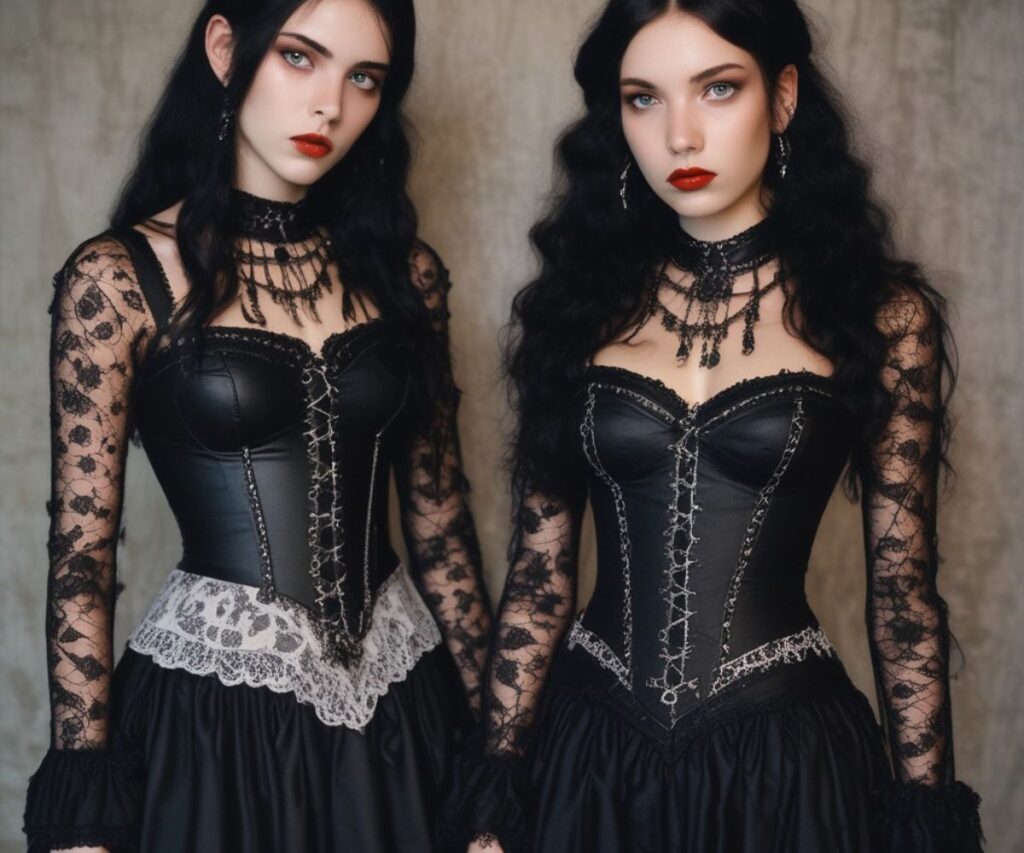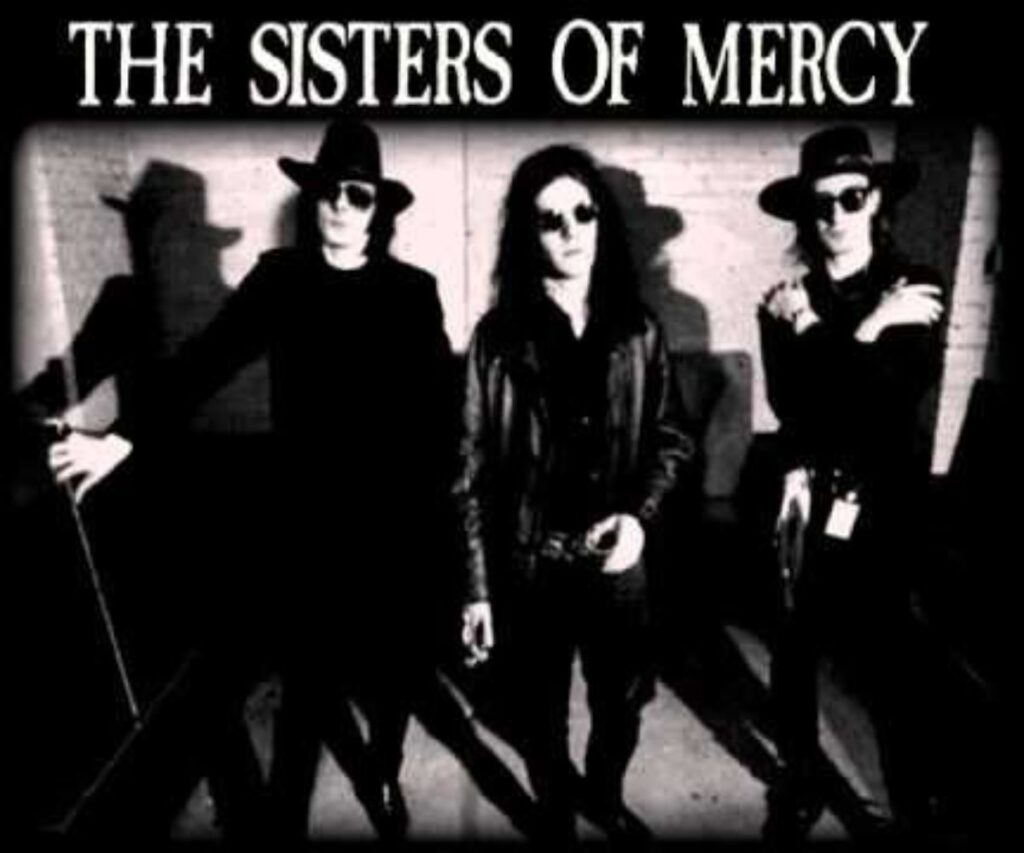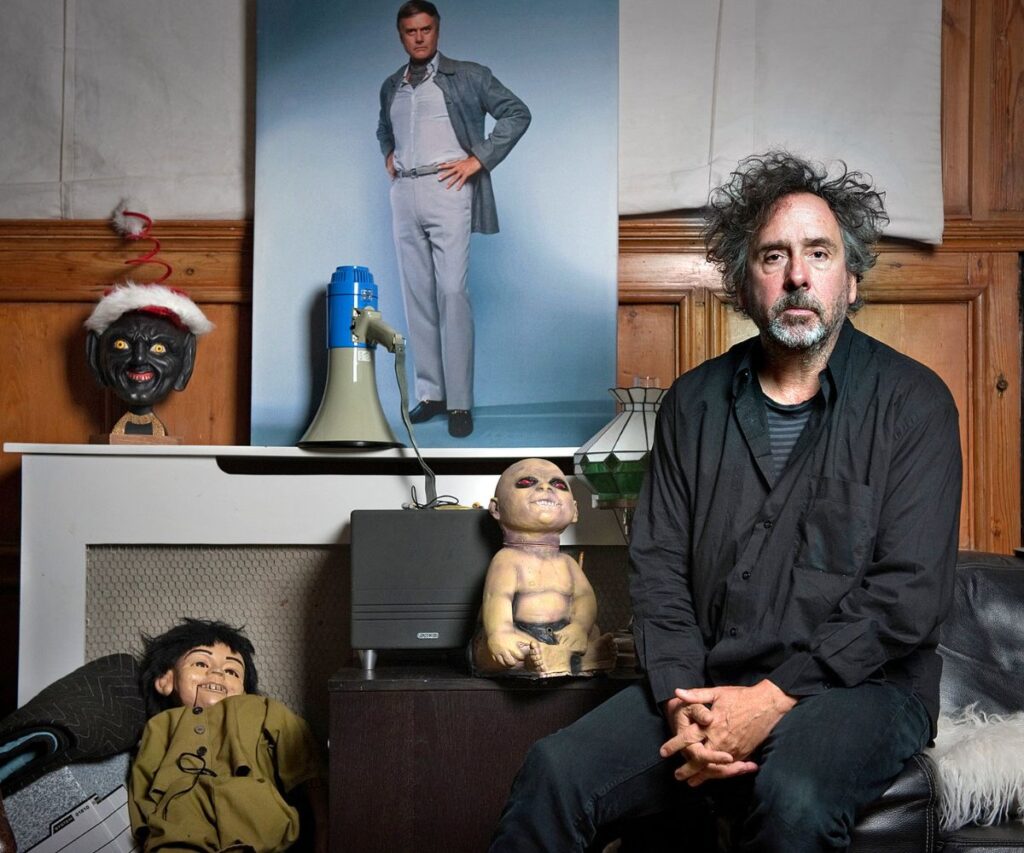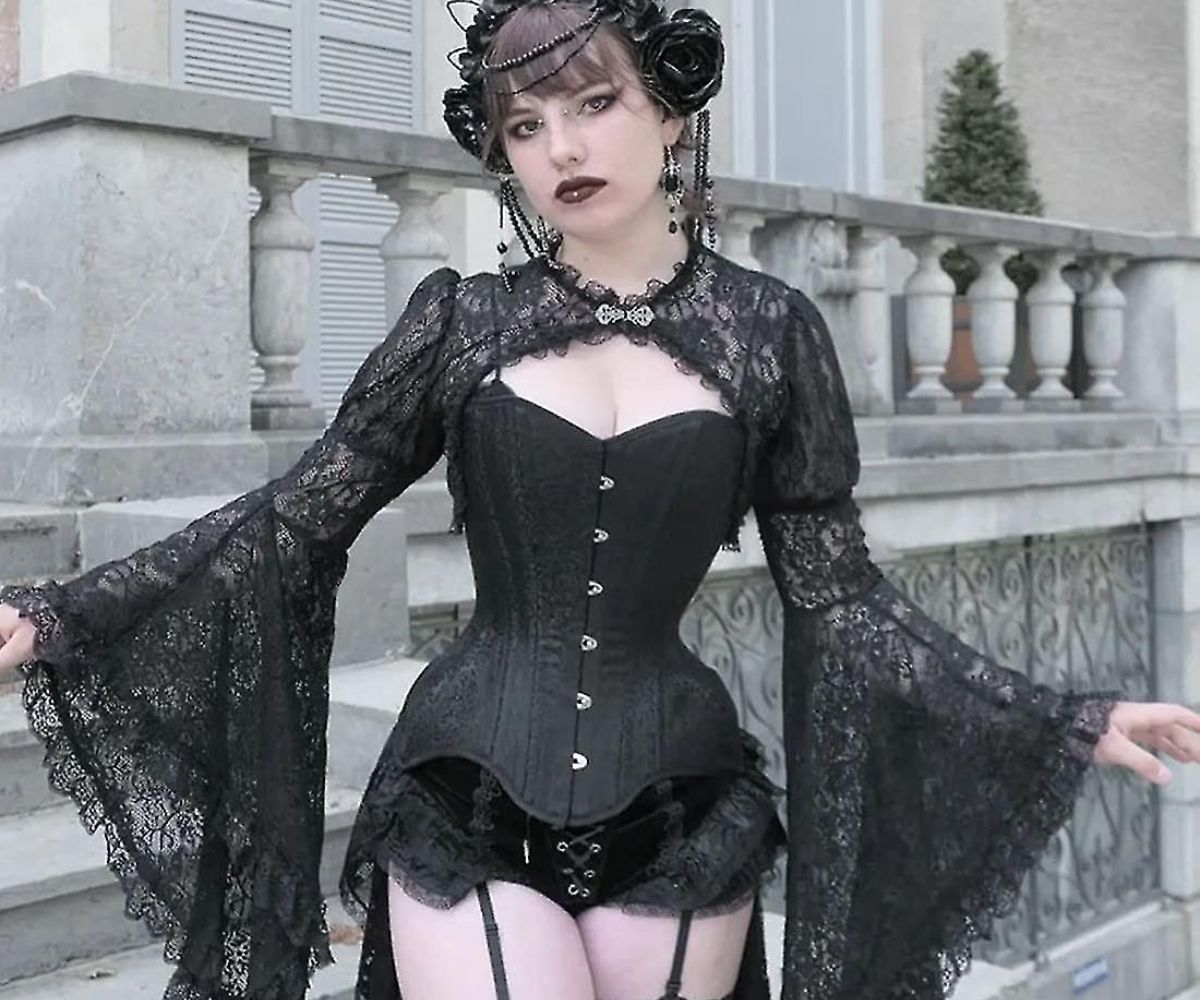The 1990s marked a pivotal era for gothic subculture, as the movement evolved from its post-punk origins into a more defined and accessible aesthetic. This decade witnessed the rise of iconic darkwave bands like The Cure, Siouxsie and the Banshees, and Bauhaus, whose haunting melodies became the soundtrack of a generation. The 90s goth scene embraced dramatic black fashion, featuring flowing fabrics, silver jewelry, and pale makeup that created an otherworldly appearance. Alternative music venues became sanctuaries where like-minded individuals gathered to express their artistic sensibilities. This underground movement wasn’t just about darkness; it represented a profound appreciation for beauty in melancholy, romance in shadows, and individuality in conformity.

Picture this: It’s 1995, and you’re walking through the local mall when you spot them. A group of teenagers dressed head-to-toe in black lace and corset tops, their pale foundation creating an ethereal glow under the fluorescent lights. Their studded chokers catch the light as they laugh, completely comfortable in their dark sensibility. This wasn’t just fashion—this was 90s goth culture at its peak. The goth subculture had officially conquered mainstream America, transforming from an underground subculture into a cultural phenomenon that would define a generation. Unlike the dramatic theatricality of the 1980s, 1990s goth was more accessible, more rebellious, and infinitely more influential than anyone could have predicted.
What Defined 90s Goth Culture?
The 90s goth movement represented a fascinating evolution from its 1980s predecessor. While the 80s holdover featured dramatic makeup and towering hair, the early 1990s saw the goth subculture embracing a more refined darkness. Trad goth purists watched as their beloved scene transformed, incorporating elements from grunge and industrial music. The philosophy remained unchanged—embracing darkness, celebrating the brooding beauty of melancholy, and finding art in life’s shadows. This dark sensibility wasn’t about depression; it was about dwelling in the romantic notion that beauty exists in unconventional places.
The mid-90s brought unprecedented changes as gothic style began evolving beyond its original boundaries. Mall culture introduced baby bats (newcomers to the scene) to pre-packaged gothic fashion through stores like Hot Topic. Traditional goths struggled with this commodification, often dismissing these mall goths as poseurs. However, this accessibility meant that goth fashion could reach suburban teenagers who might never have discovered the underground subculture otherwise. The distinction between authentic and commercial became a defining tension that the community is still grappling with today.

| 80s Goth vs 90s Goth Comparison |
|---|
| 80s Goth: Theatrical makeup, big hair, romantic frills |
| 90s Goth: Sleek hair, accessible fashion, grunge influence |
| 80s Focus: Drama and romanticism |
| 90s Focus: Accessibility and rebellion |
| Key Stores: Thrift shops, specialty boutiques |
| Key Stores: Hot Topic, mall retailers, thrift stores |
Essential 90s Goth Fashion and Clothing
Gothic outfits in the 1990s centered around versatile black clothing that could transition from school to clubs seamlessly. Slip dresses became the foundation of many looks, often paired with mesh shirts for layering. Combat boots weren’t just footwear—they were a statement of rebellion and practicality. The edgy style incorporated grunge-inspired looks with ripped tights, oversized flannels, and distressed denim. Corset tops gained popularity as they created dramatic slim silhouettes while maintaining the feminine mystery that defined gothic style. Babydoll tees offered a softer contrast to harder elements like leather flares and studded accessories.
The rise of gothic brands like Tripp and VampireFreaks revolutionized how young people accessed dark fashion. Hot Topic became the gateway drug for many baby bats, offering affordable alternatives to expensive designer pieces. However, serious goths still preferred thrift store hunting, using their DIY skills to modify vintage finds. Pleated miniskirts paired with platform shoes created the perfect balance of preppy and punk. Mary janes offered a more subtle gothic touch for those navigating strict dress codes. The androgynous nature of much 90s goth fashion meant that clothing wasn’t strictly gendered—mesh shirts and black lace looked equally stunning on everyone.
Iconic 90s Goth Accessories Every Fan Owned
Jewelry: From Chokers to Cross Necklaces

Layered necklaces became the signature of 90s goth style, with studded chokers forming the foundation of most looks. Silver rings adorned multiple fingers, often featuring skulls, crosses, or Celtic designs. Rosaries as necklaces sparked controversy but remained popular among those rebelling against traditional religious imagery.

Small hoop earrings provided subtle elegance, while multiple ear piercings allowed for creative expression. The art of layering jewelry reached new heights as goths combined cuff bracelets with studded leather bracelets to create unique personal statements.
Footwear: Platform Boots and Creepers Revolution

Platform shoes literally elevated goth fashion to new heights during the late 90s. Combat boots remained the practical choice for everyday wear, but clubs demanded something more dramatic. Creepers offered a sleek alternative that worked with both slip dresses and jeans. Mary janes in patent leather became popular among those incorporating preppy elements into their gothic style. The higher the platform, the more authentic the look seemed—until you had to actually walk in them. Many goths learned the hard way that fashion and function don’t always align perfectly.
Hand Accessories and Body Modifications

Fingerless gloves in black lace or fishnet became essential for achieving the perfect gothic aesthetic. DIY skills flourished as teenagers created their own accessories using safety pins, chains, and fabric scraps. Temporary tattoos allowed experimentation with body art before committing to permanent ink.

Facial piercings remained relatively uncommon compared to today’s standards, with nose rings and eyebrow rings representing serious commitment to the lifestyle. Belly button rings gained popularity as Y2K fashion approached, bridging gothic and mainstream trends.
| Essential 90s Goth Accessories Checklist |
|---|
| ✓ Studded choker (minimum 3 different styles) |
| ✓ Layered necklaces with crosses or pendants |
| ✓ Combat boots or platform shoes |
| ✓ Fingerless gloves in black lace or fishnet |
| ✓ Multiple ear piercings with silver rings |
| ✓ Cuff bracelets and leather accessories |
| ✓ Hair accessories like claw clips or hair barrettes |
90s Goth Hairstyles and Hair Culture
Goth hairstyles in the 1990s marked a dramatic departure from the towering, teased styles of the previous decade. Center parts became incredibly popular, creating a sleek and simple frame for pale foundation and dark eyeliner. Slicked back ponytails offered a severe elegance that worked equally well in boardrooms and underground clubs.

The messy piled-on look achieved with claw clips became a playful mainstay of casual goth style. Hair didn’t need to be perfect—in fact, the slightly undone aesthetic suggested a natural rebellious spirit that couldn’t be tamed by conventional beauty standards.
Space buns emerged as the most iconic 90s goth hairstyle, offering a playful mainstay that balanced cute with creepy. Gothic hair accessories transformed simple styles into dramatic statements—hair barrettes shaped like bats, skulls, or moons added personality to basic updos. DIY skills extended to hair care, with many goths learning to achieve spiked ends using extreme amounts of gel and hairspray. The end of the decade saw experimentation with iridescent hair colors that would catch light in clubs, creating an otherworldly effect that perfectly complemented the dreamy experimental music of the era.
The Art of 90s Goth Makeup

Pale foundation served as the canvas for all gothic makeup looks throughout the 1990s. Achieving the perfect ghostly foundation required layering light shades and sometimes incorporating white face paint for extra drama. Dark eyeliner wasn’t just applied—it was sculpted into stark black lines that could cut glass. The goal wasn’t subtle enhancement but dramatic transformation. Eyebrow pencil helped create severe, architectural brows that framed the eyes like picture frames. Many goths experimented with shaving their natural brows entirely, redrawing them in stark black lines that followed unconventional shapes.

Black lipstick became the signature of 90s goth beauty, though deep plum lips and dark red lips offered sophisticated alternatives for those navigating professional environments. Jewel tones eyeshadow in emerald, sapphire, and amethyst created stunning contrast against pale foundation. Iridescent eyeshadow gained popularity toward the late 90s, adding an otherworldly shimmer that caught light beautifully in dim club environments. The chipped black nail polish aesthetic wasn’t laziness—it was an intentional statement about rejecting mainstream beauty standards. Drugstore brands like Wet n Wild and NYC provided affordable options for experimenting with dramatic looks without breaking teenage budgets.
| Essential 90s Goth Makeup Products |
|---|
| Pale foundation (2 shades lighter than natural) |
| Black eyeliner (pencil and liquid) |
| Black lipstick or deep plum alternatives |
| Jewel tones eyeshadow palette |
| White face paint for special occasions |
| Eyebrow pencil in black or dark brown |
| Black nail polish (chipped application welcome) |
90s Goth Music: Bands That Defined the Decade

Goth music in the 1990s built upon the foundation laid by trad goth acts like Sisters of Mercy, the Cure, and Siouxsie and the Banshees. These pioneers continued releasing influential albums throughout the early 1990s, but new bands were evolving the sound in exciting directions. Industrial rock began merging with traditional gothic elements, creating a harsher, more aggressive sound that reflected the decade’s increasing cynicism. Nine Inch Nails became the poster child for this industrial goth fusion, while Marilyn Manson served as the MTV provocateur who brought gothic imagery to suburban living rooms across America.
The underground subculture thrived on smaller bands that might never achieve mainstream success but defined the scene for true believers. Faith and the Muse, London After Midnight, Rosetta Stone, and Corpus Delicti created the trancelike rhythms and haunting melodies that filled goth clubs every weekend. Shoegaze influences from bands like My Bloody Valentine introduced a dreamy experimental quality that complemented the brooding romantic themes of traditional gothic music. This hazy fuzzed-out sound created perfect soundscapes for late-night conversations about philosophy, poetry, and the meaning of existence.
Essential 90s Goth Music Timeline:
1990-1992: Trad goth acts dominate with continued releases 1993-1995: Industrial rock begins merging with gothic themes 1996-1998: Shoegaze music goth influence creates new subgenres 1999: New millennium approaches with Y2K electronic influences
Movies That Captured 90s Goth Aesthetic
Tim Burton’s Gothic Romance Era

Tim Burton became the unofficial visual director of 90s goth culture through films that perfectly captured the aesthetic and philosophy of the movement. Edward Scissorhands introduced mainstream audiences to the romantic misfit archetype that goths had always celebrated. The film’s Victorian goth influences, combined with industrial design elements, created a template that countless goths would emulate throughout the decade. Burton’s use of stark black and white contrasts, combined with touches of color, influenced everything from gothic makeup looks to interior design choices within the goth subculture.
Dark Supernatural Cinema
The Crow starring Brandon Lee became a cultural phenomenon that extended far beyond its tragic production circumstances. The film’s influence on goth fashion cannot be overstated—suddenly every goth club was filled with people sporting black leather, dark eyeliner, and slicked back hair. The Craft introduced the witchy goth crossover that would dominate late 90s fashion, combining traditional gothic elements with mystical and supernatural themes. The film’s whimsigoth aesthetic influenced a generation of teenagers to experiment with layered necklaces, dark red lips, and flowing black lace garments.
Whimsigoth and Victorian Influences
Practical Magic perfected the whimsigoth aesthetic that became increasingly popular as the new millennium approached. The film’s combination of romantic goth elements with everyday life showed how gothic style could be incorporated into mainstream existence. Sleepy Hollow brought Victorian goth fashion back into focus, inspiring a revival of corset tops, flowing skirts, and elaborate gothic hair accessories. These films proved that dark sensibility didn’t require complete rejection of beauty or romance—it could enhance and deepen these traditional themes.
TV Shows That Embraced Goth Culture

Supernatural television programming in the 1990s provided unprecedented representation for alternative lifestyles and gothic themes. Buffy the Vampire Slayer might have featured a blonde supernatural heroine, but the show’s exploration of darkness, death, and moral ambiguity resonated deeply with goth subculture members. Characters like Willow evolved from preppy to alternative, showing viewers how someone could gradually embrace dark fashion and mystical interests. The show’s costume designers understood that gothic style wasn’t costume—it was authentic self-expression that deserved respectful treatment.
The X-Files created a haunting atmosphere that perfectly complemented 90s goth sensibilities. The show’s exploration of government conspiracies, supernatural phenomena, and existential dread provided intellectual content that goths could appreciate beyond surface-level aesthetics. Twin Peaks had ended its original run by the early 1990s, but its influence on gothic television cannot be understated. The show’s surreal approach to investigating darkness beneath small-town America inspired countless imitators and showed how spooky content could achieve critical acclaim and mainstream success.
Society’s Response to 90s Goth Culture
Mainstream media treatment of 90s goth culture ranged from curious fascination to outright moral panic. Daytime talk shows regularly featured episodes designed to shame gothic teenagers, often bringing families on stage to confront their children’s “phase.” Shows like Jerry Springer and Sally Jessy Raphael treated goth subculture members like circus attractions, focusing on facial piercings, unusual clothing, and misunderstood religious practices. The satanic panic of the 1980s continued influencing public perception, with concerned parents’ groups viewing any interest in darkness as potentially dangerous.
The tragic Columbine shooting created a devastating setback for goth community acceptance when the perpetrators were incorrectly identified as goths by mainstream media. This mischaracterization led to increased surveillance and harassment of gothic students in schools across America. Many goths found themselves suspended for wearing black clothing or displaying any interest in alternative music. The goth community responded with remarkable resilience, using online forums and zines to support members facing discrimination. Gothic teenagers learned to code-switch, maintaining their authentic selves while adapting to hostile environments that viewed their dark sensibility as inherently threatening.
| 90s Goth Discrimination Timeline |
|---|
| Early 90s: Workplace dress code challenges |
| Mid-90s: School zero-tolerance policies increase |
| 1999: Post-Columbine backlash and mischaracterization |
| Late 90s: Community organizing and support networks develop |
The Lasting Legacy of 90s Goth Style
Modern goth fashion owes an enormous debt to the innovations and accessibility achievements of 90s goth culture. Social media platforms like Instagram and TikTok have created a massive gothic revival, with young people discovering bands like Sisters of Mercy and the Cure through algorithm recommendations. Contemporary brands have embraced gothic aesthetic elements, incorporating black lace, corset tops, and platform shoes into mainstream collections. Thrift shopping has become more popular than ever, with vintage 90s goth fashion trends commanding premium prices on resale platforms.
DIY skills remain central to authentic gothic style, but modern goths have access to tutorials and communities that previous generations could only dream of. Gothic makeup looks from the 1990s continue inspiring beauty influencers, with pale foundation and dark eyeliner techniques being refined and shared across platforms. The rebellious spirit that defined 90s goth has evolved to address contemporary issues, with modern goths using their platform to advocate for LGBTQ+ rights, mental health awareness, and artistic expression. Industrial goth clothing brands continue thriving, proving that the market commodification that worried trad goth purists ultimately helped preserve and spread the culture they loved.
“The beauty of 90s goth culture wasn’t just in the clothes or music—it was in creating space for people who didn’t fit conventional molds. That legacy continues today.” – Anonymous former member of the underground goth scene
Shopping Guide for Modern 90s Goth Style:
Vintage Sources: Amazon, Depop, Vestiaire Collective, local thrift stores Contemporary Brands: Killstar, Disturbia, Punk Rave Affordable Options: ASOS, Urban Outfitters gothic collections DIY Supplies: Fabric stores, hardware stores for chains and studs Makeup: NYX Professional, Kat Von D Beauty, drugstore alternatives
The 90s goth culture proved that underground subcultures could influence mainstream society while maintaining their authentic core values. From Hot Topic to high fashion runways, the dark sensibility that defined a generation continues evolving and inspiring new forms of creative expression. Whether you’re incorporating subtle gothic elements into modern outfits or fully embracing the dramatic lifestyle, the 1990s provided a roadmap for turning personal darkness into powerful artistic statement. The goth subculture didn’t just survive the decade—it conquered it, leaving an indelible mark on fashion, music, and youth culture that continues influencing new generations of misfits, rebels, and beautiful weirdos who refuse to conform to conventional expectations.
Styling Tips: Modernizing Classic Gothic Looks
Bringing 90s goth fashion into the present is all about incorporating old elements with fresh ones. Try layering mesh shirts under slip dresses, adding chokers, and pairing them with modern mary janes or edgy sneakers. Mix vintage black lace with grunge-inspired looks or create hybrid outfits that blend whimsigoth aesthetic Practical Magic vibes with Y2K accessories.
Embrace spiked ends or space buns using gothic hair accessories like claw clips or dark barrettes. For makeup, balance ghostly foundation with subtle jewel tones eyeshadow or dark eyeliner for a modern twist. The key is to stay expressive, mix eras, and keep the gothified spirit alive.
Community Resources: Active Goth Communities and Events
The goth subculture is thriving online and in person. You can join Facebook groups and Reddit threads for baby bats, trad goths, and shoegaze music goth influence fans. Sites like VampireFreaks and Discord servers host themed chats, outfit inspiration, and event announcements. Many fans also gather on TikTok using hashtags like #GothTok or #90sGoth to share styles and music.
Offline, events like goth nights, darkwave shows, and alternative fashion expos still celebrate the haunting beauty of goth life. Cities across the USA host meetups where you can connect with others who share your love for gothic piercings 1990s style, vintage finds, and deep plum lips energy.
Conclusion:
The 90s goth movement continues to enchant new generations with its mysterious beauty, emotional depth, and rebellious soul. From layered gothic outfits and dark makeup to the haunting sounds of shoegaze and industrial rock, this era carved out a space for misfits, artists, and dreamers to fully express themselves. Its influence lives on through modern fashion, film, and music, proving that the legacy of the goth subculture is far from fading.
This complete guide has walked you through the key elements of 90s goth culture—from fashion and hair to music, movies, and community. Whether you’re rediscovering your inner goth or just getting started, you now have everything you need to embrace this iconic style with confidence and creativity.
We’d love to hear your thoughts! Have a favorite goth band, styling tip, or memory from the gothic 90s? Drop a comment, share this guide, or tag us in your best 90s goth fashion trends online. Let the world see your dark sensibility shine.
FAQ’s
Q1: What was goth in the 90s?
The 90s goth scene embraced dark fashion, moody music like industrial rock, and emotional rebellion. It mixed trad goth roots with grunge-inspired looks and DIY aesthetics. The vibe was brooding, creative, and anti-mainstream.
Q2: What is the 90s theme style?
90s fashion themes blended gothic outfits, platform shoes, and black lace with edgy rebellion. Styles featured pleated miniskirts, mesh shirts, and layered silver rings. The look was bold, expressive, and unmistakably alternative.
Q3: Is mall goth 90s?
Yes, mall goth exploded in the late 90s through stores like Hot Topic and Tripp. It mixed gothic style with mainstream media and mall culture. Mall goths wore chokers, combat boots, and mass-produced dark fashion.
Q4: What is the gothic culture?
Gothic culture is an underground subculture rooted in music, fashion, and emotional depth. It values dark sensibility, gothic makeup, and self-expression through haunting aesthetics. It spans from Victorian goth to whimsigoth trends.
Q5: Is goth a religion?
No, goth is not a religion—it’s a fashion and music-based subculture. While it explores themes like spirituality and mysticism, it’s not based on belief systems. It’s about rebelling, embracing darkness, and artistic identity.If you’re interested in Goth Dark Academia, be sure to check out our Dark Academia: The Complete Guide to Dark Academia Clothing for Women to explore more unique and dark options!


2 thoughts on “The 90s Goth: A Legacy of Style, Fashion, Music, and Lifestyle”